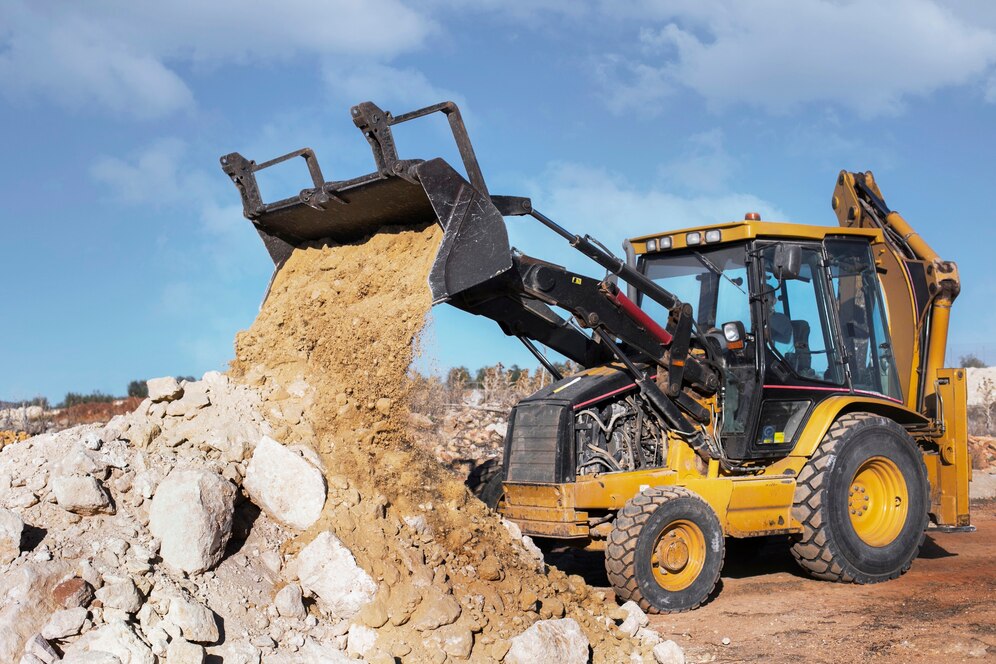1. Introduction
Aggregate equipment plays a critical role in the production and processing of construction materials like gravel, sand, and stone. From crushers to conveyors, each component of the machinery must be functioning optimally to ensure smooth and efficient operations. However, like any mechanical system, aggregate equipment is subject to wear and tear, which can lead to breakdowns and costly downtime. Proper maintenance practices are essential to prolong the life of the equipment and ensure that it operates efficiently over time. This guide outlines essential tips and strategies to help you maintain your aggregate equipment for longevity.
2. Importance of Regular Maintenance
Regular maintenance is the cornerstone of equipment longevity. Without a structured maintenance plan, aggregates equipment is susceptible to failure, leading to production halts and increased operational costs. By maintaining equipment consistently, you can:
- Increase equipment lifespan: Regular servicing prevents the early deterioration of parts.
- Improve operational efficiency: Well-maintained equipment functions optimally, reducing energy use and maximizing production output.
- Prevent major breakdowns: Identifying and addressing small issues early can prevent larger, more expensive repairs.
- Ensure safety: Properly maintained equipment reduces the risk of accidents and injuries.
3. Key Components to Monitor for Longevity
Aggregate equipment includes several key components, each requiring specific maintenance measures. Below are the primary equipment parts that should be monitored regularly:
3.1 Crushers
Crushers, such as jaw, cone, and impact crushers, break down large pieces of aggregate material into smaller, manageable sizes. Regularly check the following:
- Wear parts: Monitor the condition of worn parts like liners, blow bars, and mantles. Replace them when they show signs of excessive wear.
- Lubrication: Ensure that bearings and other moving parts are well-lubricated to prevent friction and overheating.
- Clearance checks: Ensure that there are no obstructions in the crusher’s chamber and that it’s running at the correct settings.
3.2 Conveyors
Conveyors move material from one part of the processing plant to another. Maintenance should focus on:
- Belt integrity: Check for any tears, misalignment, or material buildup on the conveyor belts.
- Rollers and pulleys: Inspect rollers and pulleys to ensure smooth movement and replace them if they become damaged.
- Drive systems: Lubricate and check the motor, gearbox, and chains to ensure proper power transmission.
3.3 Screens
Screens are used to separate materials by size. For proper maintenance:
- Screen tension: Ensure the screens are tightly tensioned to prevent tearing or sagging.
- Vibrating mechanisms: Regularly inspect the bearings and springs that drive the screen’s movement.
- Clogging: Clean the screens periodically to remove any material buildup that may reduce efficiency.
3.4 Washers
Washers remove unwanted material from aggregates. Maintenance should focus on:
- Water systems: Inspect water jets for blockages and clean them regularly to ensure even washing.
- Wear parts: Monitor scrapers and paddles for wear and replace them when necessary.
- Settling tanks: Clean out sediment and debris from settling tanks to maintain proper water flow.
4. Daily Maintenance Practices
Routine daily maintenance is essential to keep equipment in peak condition. Some best practices for daily maintenance include:
- Visual inspections: Conduct a quick visual inspection of all equipment before and after shifts to identify any signs of damage or wear.
- Lubrication: Lubricate moving parts daily, following the manufacturer’s guidelines, to reduce friction and prevent premature failure.
- Clean the equipment: Remove any debris, dust, or aggregates that have accumulated on the machinery to prevent clogging and overheating.
- Check for unusual noises or vibrations: Listen for any abnormal sounds or vibrations, which could indicate a malfunction.
5. Preventive Maintenance Schedule
A well-planned preventive maintenance schedule should be adhered to for more in-depth maintenance. This schedule can include:
- Weekly checks: Perform a more thorough inspection, ensuring all lubrication systems are functioning correctly, checking wear parts, and tightening any loose bolts.
- Monthly checks: Inspect critical parts like motors, belts, and hydraulics for wear and replace any worn-out parts.
- Quarterly checks: Conduct a comprehensive assessment of the equipment, inspecting all mechanical and electrical systems. Replace worn bearings, inspect gearboxes, and check the integrity of structural components.
- Annual overhaul: Once a year, plan a major maintenance shutdown to overhaul the equipment. This may involve replacing larger components, repainting parts, and upgrading outdated systems.
6. Common Maintenance Challenges and How to Address Them
Even with a solid maintenance plan, challenges can arise that affect equipment longevity. Some common issues include:
- Overloading: Running equipment beyond its capacity can cause excessive wear and tear. Operators should be trained to work within the equipment’s recommended capacity.
- Contamination: Dust and dirt can enter sensitive components like bearings and hydraulics. Regular cleaning and the use of seals can prevent contamination.
- Corrosion: Exposure to moisture, chemicals, and harsh environments can lead to rust and corrosion. Use anti-corrosion treatments and store equipment in dry areas when possible.
7. The Role of Proper Training and Safety Measures
Ensuring that your staff is well-trained in operating and maintaining aggregate equipment is crucial for both safety and longevity. Key training and safety measures include:
- Equipment operation training: Ensure all operators understand the machinery’s controls and limitations to avoid overloading or improper use.
- Safety protocols: Implement strict safety protocols, including the use of personal protective equipment (PPE) and lockout/tagout procedures during maintenance.
- Regular safety drills: Conduct safety drills and refresher courses on handling equipment malfunctions and emergencies.
8. Innovations in Equipment Maintenance Technology
The introduction of new technologies has transformed the way aggregate equipment is maintained. Some innovative solutions include:
- Predictive maintenance: Using sensors and IoT technology, the equipment can now monitor its own health and alert operators to potential issues before they lead to breakdowns.
- Remote monitoring: Operators can track equipment performance and receive maintenance alerts remotely, enabling faster responses to potential issues.
- Automated lubrication systems: These systems ensure that parts are always properly lubricated, reducing the risk of human error and extending the life of the equipment.
Read Also : What Security Measures Does ServiceTitan Use for Login?
9. Conclusion
Maintaining aggregate equipment for longevity requires a structured approach that includes regular inspections, preventive maintenance, proper operator training, and the use of modern technology. By taking the time to care for your equipment, you can extend its lifespan, reduce downtime, and save on costly repairs. Whether you’re overseeing crushers, conveyors, screens, or washers, the goal is to keep each component functioning at its best to ensure smooth, safe, and efficient operations over the long term.
By following these guidelines, you’ll be well on your way to maximizing the operational life and productivity of your aggregates equipment.





